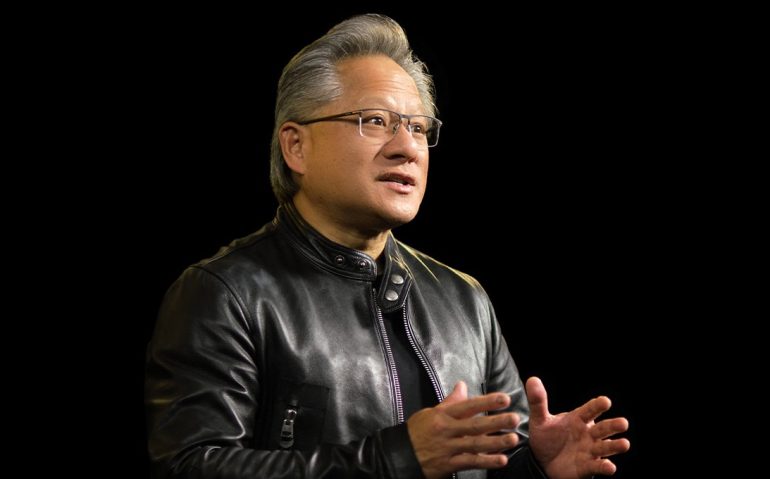NVIDIA, a trailblazing U.S. technology firm renowned for its innovative processor and chipset designs, has once again raised the bar in the tech industry. The company’s recent announcement of powerful new NVIDIA RTX™ workstations, designed to cater to the burgeoning needs of generative AI and digitalization, comes on the heels of a highly successful 2023 fiscal year. In this period, NVIDIA’s revenues surged to a staggering $26.97 billion U.S. dollars, marking a slight uptick from the previous year’s $26.91 billion U.S. dollars. Impressively, this figure stands as the highest recorded for the time studied.
NVIDIA’s Rich History of Innovation
NVIDIA’s journey towards technological excellence dates back to its inception in 1993. The company, headquartered in Santa Clara, California, was founded by Jensen Huang, a visionary with a background as a microprocessor designer at Advanced Micro Devices (AMD). From the very beginning, Huang has been at the helm of NVIDIA as its president and chief executive officer (CEO).
Over the years, NVIDIA has become synonymous with cutting-edge graphics processing units (GPUs), designed not only for the gaming realm but also for professional markets. These GPUs have played a pivotal role in reshaping the landscape of visual computing, enabling individuals to experience digital worlds like never before. This dedication to innovation has propelled NVIDIA to the forefront of the tech industry.
Nvidia’s Ambitious Pursuit of Arm
NVIDIA’s quest for growth and influence led the company to pursue a transformative agreement with SoftBank Group Corp., aiming to acquire Arm Limited in a monumental $40 billion U.S. dollar deal. This acquisition, if successful, would have positioned NVIDIA at the nexus of the semiconductor industry, holding unprecedented sway over a wide array of markets.
However, in February 2022, the ambitious deal faced an unexpected setback. Nvidia revealed that significant regulatory challenges had thwarted their plans, resulting in the collapse of the acquisition. The Arm takeover, which had the potential to be the largest semiconductor industry acquisition in history, ultimately fell through. As a result of this unfulfilled transaction, SoftBank received $1.25 billion U.S. dollars from Nvidia, a sum reflecting the gravity of the deal’s dissolution.
Despite this setback, NVIDIA’s indomitable spirit and commitment to pushing boundaries remain unshaken. The company’s relentless pursuit of innovation continues to define its journey, as evidenced by its latest revelation: the next-gen RTX workstations poised to reshape the landscape of generative AI and digital content creation.
Next-Gen RTX Workstations and GPUs for a New Era
In a groundbreaking move, NVIDIA has partnered with industry leaders like BOXX, Dell Technologies, HP, and Lenovo to introduce an awe-inspiring line of NVIDIA RTX™ workstations. These cutting-edge workstations are meticulously crafted to cater to the dynamic needs of generative AI and digital content creation, signaling a revolutionary leap forward in professional capabilities worldwide.
At the heart of these workstations lies the powerhouse NVIDIA RTX 6000 Ada Generation GPUs, redefining performance benchmarks and seamlessly integrating NVIDIA AI Enterprise and NVIDIA Omniverse™ Enterprise software. These GPUs are poised to tackle the most demanding tasks, from resource-intensive generative AI projects to graphics-rich workflows.
Bob Pette, Vice President of Professional Visualization at NVIDIA, emphasized the challenges of generative AI and digitalization applications, stating, “Few workloads are as challenging as generative AI and digitalization applications, which require a full-stack approach to computing.” With the advent of the new RTX workstations, professionals can now harness this power directly from their desktops, enabling them to craft expansive, digitally immersive worlds in the era of generative AI.
The RTX workstations boast formidable capabilities, with the potential to house up to four NVIDIA RTX 6000 Ada GPUs, each equipped with 48GB of memory. This translates into a single desktop workstation delivering an astonishing 5,828 TFLOPS of AI performance and a staggering 192GB of GPU memory. With the flexibility to choose between NVIDIA AI Enterprise or Omniverse Enterprise software configurations, users can seamlessly adapt to a diverse range of generative AI and graphics-intensive workloads.
The software ecosystem receives a significant boost with the introduction of NVIDIA AI Enterprise 4.0, featuring the groundbreaking NVIDIA NeMo™ framework for end-to-end generative AI model customization, as well as other essential tools and libraries. Complementing this is the Omniverse Enterprise platform, enhancing industrial digitalization capabilities by facilitating seamless 3D workflow development across various applications.
Jason Schnitzer, CTO at Yurts, underscored the adaptability of the solution, stating, “Yurts provides a full-stack generative AI solution aligning with multiple form factors, deployment models, and budgets of our customers.” By synergizing the capabilities of LLMs for natural language processing tasks and incorporating the RTX 6000 Ada GPUs, Yurts remains steadfast in its commitment to scaling its platform alongside NVIDIA.
The innovation doesn’t halt there. NVIDIA is set to release three new desktop workstation Ada Generation GPUs — the NVIDIA RTX 5000, RTX 4500, and RTX 4000. These GPUs harness the prowess of the Ada Lovelace architecture, offering improved CUDA® cores, third-generation RT Cores, fourth-generation Tensor Cores, DLSS 3 capabilities, and expanded GPU memory. This harmonious blend of features contributes to elevated graphics and AI performance, setting new standards in the industry.
Dan Stine, Director of Design Technology at architectural firm Lake|Flato, lauded the RTX 5000 Ada GPU’s generational performance improvements. He highlighted its prowess in creating stereo panoramas using Enscape, stating, “With the performance boost and large frame buffer of RTX 5000 GPUs, our large, complex models look great in virtual reality, which gives our clients a more comfortable and contextual experience.”
Anticipation is mounting as these groundbreaking innovations are poised to hit the market in the near future. The RTX workstations, featuring up to four RTX 6000 Ada GPUs alongside NVIDIA AI Enterprise and NVIDIA Omniverse Enterprise software, are slated for availability from system builders starting in the fall. Simultaneously, the new RTX 5000 GPU has already begun shipping from HP and other global distribution partners, with the RTX 4500 and RTX 4000 GPUs slated for release in the fall through various manufacturers.
In an era where AI-driven digitalization pushes boundaries, NVIDIA stands as a beacon of innovation, ushering in transformative solutions that empower professionals to pioneer new realms in generative AI and content creation. With a storied history of innovation, a record-breaking fiscal year, and a future brimming with possibilities, NVIDIA continues to be at the forefront of technological advancement, reshaping industries and inspiring the world.







